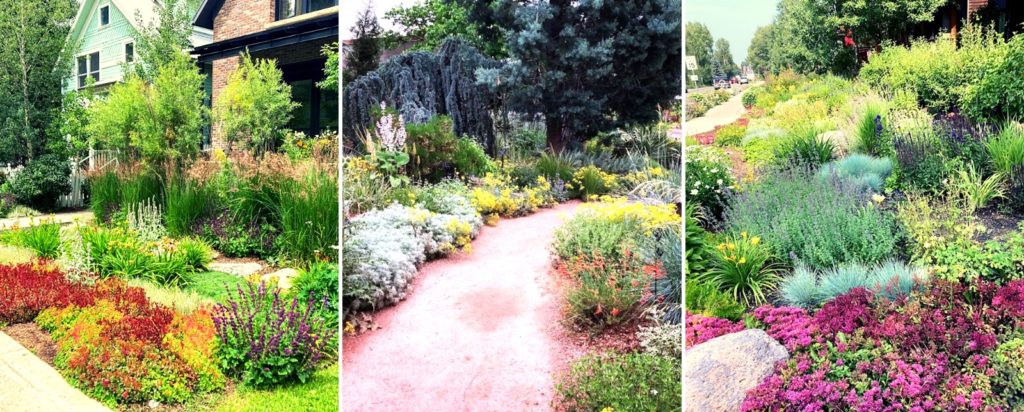12 Aug Is Living Mulch Something I Need?
Living mulch is a great way to work with nature in your landscape to produce more of what you want and less of what you don’t. It benefits you and the nature that we nurture.
To begin, let’s set the stage by establishing what mulch is. In the landscaping world, mulch is typically a layer of material that sits on top of the soil. It can be organic – usually woody (bark or otherwise) – or inorganic – usually gravel. It plays important roles to help keep the moisture in the soil, and serve as a barrier from weeds trying to sprout up from below. The drawback is that mulch needs to be replenished from time to time and is generally an external input, brought from off site and requiring energy-intensive processes to get it there, like mining gravel, processing woody material, bagging, transport, all of which add to our carbon footprint.
The wonderful news is that when your perennial beds are planted strategically to create living mulch, we can avoid all the downsides but still benefit from the role of mulch in the landscape. Living mulch is created by the plants living in your landscape. The key is for them to be planted close enough together to achieve full coverage of the soil by the time they are mature. They may just touch edges or they may overlap some; either way they function to retain moisture in the soil and deter weeds.

Low growing, spreading shrubs (some of my favorites are Gro-Low sumac, Manzanita, and creeping junipers) can do the trick alone, or can be combined with flowering perennials. Heights and forms can vary – and from a design perspective, should be varied for interest – so long as the ground is covered by the time the landscape matures.
Keep in mind, when planting a new area, the plants will be small at first and there will be lots of bare space between them, so it is important initially to add some non-living mulch until your plants fill in. Ideal would be only one application, but depending what type you use, it can break down rather quickly (which isn’t bad; it’s feeding your soil with organic matter) and may need to be replenished before your plants start doing the job for you.
Another significant benefit to living mulch is that it increases the biomass in your landscape, and if you plan for it, it can also increase the biodiversity, both of which are important for the local ecology and providing habitat for pollinators and for other beneficial critters. For example, when there is more habitat for birds, they will spend more time in your landscape, which is not only pleasing to most people, but they serve an ecological function of eating insects that could otherwise cause damage to your plants. Creating habitat allows the opportunity for us to better work with nature and benefit from the balance that can result. If this is your goal, be sure to use plenty of native plants which will be most useful to our native fauna.
If you have an established landscape and want to create living mulch, you are in luck! All it takes is adding plants to fill in the gaps. Keep in mind that planting multiples of anything you add and grouping them together makes it easiest on the pollinators to go from one to the other when they are in bloom, expending the least amount of energy. Grouping, also called massing, is desirable from a design perspective as well to create more visual impact per species. And then you have all the other considerations of planting design which I have condensed for you here. Living mulch is a great way to nurture nature and nurture yourself.
To the glory of the garden,
Eva Montane
President, Columbine Landscapes

Sorry, the comment form is closed at this time.